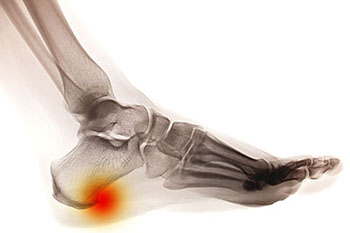
Heel spurs are brought upon by a calcium deposit that causes a bony protrusion on the underside of the heel bone. It normally forms over time and can best be diagnosed through an x-ray examination. Heel spurs are commonly linked with plantar fasciitis, an inflammation that runs along the bottom of the foot. Common symptoms of heel spurs include pain towards the affected area, inflammation, and swelling at the front of the heel.
There are different causes that may lead to a heel spur including inappropriate shoes, excess weight or obesity, repetitive stress from running or jogging on hard surfaces, and arthritis. Treating a heel spur often requires a lifestyle change as well as footwear changes. To prevent further damage, it may be useful to look into wearing shoe inserts or custom-made orthotics.
Chiropodists may advise different exercises help manage of heel spurs and will offer treatments to decrease pain you may be experiencing. Some of these helpful exercises include calf stretches or plantar fascia loading. Heel spur prevention can start by understanding the everyday stresses put on your feet and knowing when to let your feet rest. It is also important to not let heel pain go uncared for. Once you notice something is off, act instead of waiting to see if it goes away. This type of heel pain can be part of a wider degenerative heel condition and the sooner it is managed the better.
If you would like more information about heel spurs, consult with a chiropodist who can provide you with a thorough assessment and comprehensive professional care. Call us to book now.
